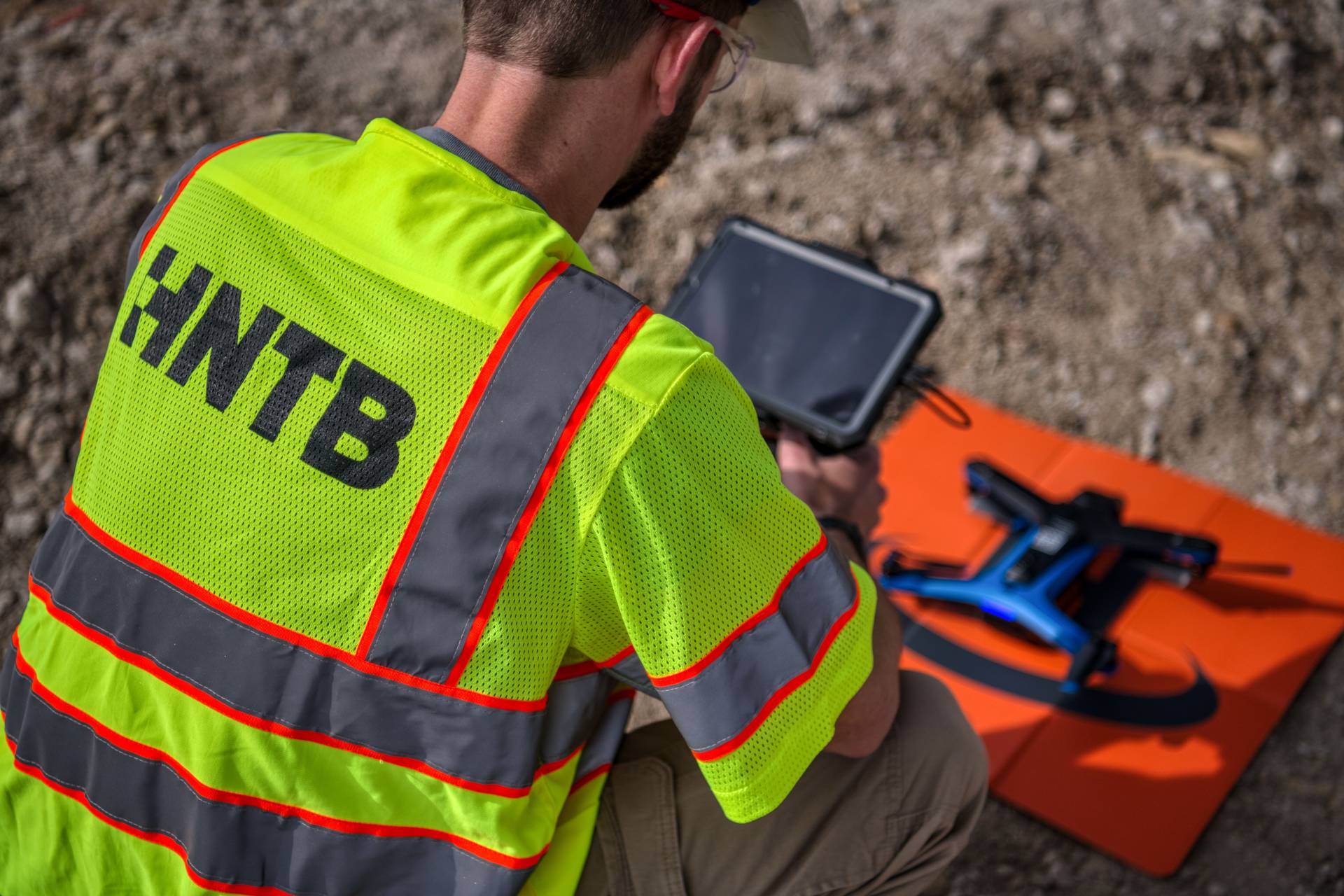
Unlocking the power of technology-driven construction practices
Exploring and utilizing new technologies for construction management operations can drive innovative solutions in transportation infrastructure delivery
The transportation industry is undergoing rapid transformation. Advancements in technology and innovation are impacting how infrastructure projects are designed, managed and constructed. The shift from analog to digital technologies is not only enhancing efficiency, but also revolutionizing how the industry is working to streamline construction workflows and ensure consistent collection of data. This presents new potential for the construction of projects that enhance mobility and connect communities.
As new and innovative technologies continue to be developed, the ability to evaluate, adopt and integrate these technologies into ongoing systems can help drive successful project delivery.
A systematic approach to the evaluation and implementation of new technologies is critical for project partners to consider. A key to accomplishing this is through a technology needs assessment, which helps organizations and their project partners understand their current technologies and identify potential solutions that new technologies can provide to meet the long-term goals of a project or capital program.
Optimizing the value of a technology needs assessment
A technology needs assessment is a strategic process used to identify and evaluate the technological requirements of an organization or project. It involves engaging key stakeholders to understand their needs, assessing the current technology infrastructure and identifying gaps or areas for improvement. The assessment also includes defining specific use cases for new technologies, ensuring seamless integration with existing systems and developing a detailed plan that covers the schedule, budget and resources required for implementation.
Conducting a needs assessment prior to procurement ensures that selected technologies align with each organization's or project's unique requirements and helps them to deliver on their long-term goals. The following practices can help maximize the value of a needs assessment, driving the long-term viability of technologies and ultimately enhancing construction operations.
- Identify project champions: These individuals are responsible for executing the needs assessment and ensuring that the technology is procured and implemented successfully. Project champions should represent diverse roles within the organization and project team to ensure that the technologies encourage collaboration and support a wide range of disciplines.
- Engage stakeholders: Include input from all relevant stakeholders, including on-site workers, project managers and IT personnel, to ensure that the selected technologies meet the needs of all users and addresses practical challenges.
- Identify potential use cases: Consider when and where in the project lifecycle technologies can improve processes and efficiencies. Identify ways that technology can offer tangible solutions or benefits during the construction process.
- Remain technology agnostic: Be open minded in the assessment process. Often, technologies are not one-size-fits-all.
- Conduct thorough market research: Engage in comprehensive research to understand the latest advancements and trends in construction technologies. This ensures the most current and effective tools are considered.
- Ensure systems integration: Before procurement, ensure that technology can integrate with the systems that already exist within an organization. Project champions can create a list of current technologies in use and ascertain whether new technologies are interoperable.
- Assess the total cost of ownership: In addition to initial procurement cost consider the long-term expenses related to implementation, training, maintenance and upgrades to ensure a sustainable investment.
Implementing these practices will help ensure that technological procurement is thorough, strategic and aligned with the overall goals and the needs of the organization, ultimately leading to an effective evaluation process.

“As new and innovative technologies continue to be developed, the ability to evaluate, adopt and integrate these technologies into ongoing systems can help drive successful project delivery.”
Integrating technologies into construction management operations
Following a comprehensive needs assessment, agencies begin the procurement and implementation process. At its core, construction management technology is transforming traditional analog practices into efficient digital processes. New technology now enables real-time inspections, providing immediate feedback on project progress and alerting workers to potential risks.
While the application of these technologies differs, when implemented appropriately, they promise to enhance the quality and consistency of project delivery, reducing rework and ultimately saving time and resources.
The following are groups of technologies that can be deployed during the planning, construction and delivery of projects:
- Project Management Information Systems: Advanced digital construction management systems are at the forefront of this change and enhance interoperability between technologies, boost workflow efficiencies and mitigate project delays and cost overruns. Innovative software provides a real-time view of the project and identifies potential risks. This information enables project managers to make quick, effective decisions that improve the efficiency of the project overall. These cloud-based programs also allow the immediate storage of data and information, which can be leveraged for current or future projects.
- Field Technologies: Drones and LiDAR allow on-site imaging, providing high-resolution maps and 3D models of construction sites. This technology enables accurate site surveys, monitoring of progress and identification of potential issues before they become major problems. Tablets and mobile devices facilitate access to digital blueprints, project plans and the ability to place orders for additional materials on the go, ensuring that the team has the latest information and can make informed decisions promptly.
- Digital Delivery: The data-centric, integrated practice of submitting final designs and as-built documents as intelligent 3D models improves project visualization, adds workflow efficiencies and introduces new ways to leverage data. 3D models enhance visualization, simulation and communication of the design intent by providing agencies with a true representation of every square inch of a project. Models with this higher level of detail give an accurate portrayal of the project’s anticipated or actual as-built condition and allow for identification of potential design conflicts with impacts such as underground utilities and other existing physical assets.
Transforming construction services through technology
The integration of technology into construction practices is transforming the industry. However, to fully harness the power of technology-driven construction practices, it is essential to conduct a thorough technology needs assessment. By understanding the specific needs of a project, identifying the most suitable technologies and evaluating their potential benefits, transportation agencies can enhance efficiency, improve safety, drive innovation and ensure cost-effectiveness. The future of construction lies in the seamless integration of technology, and a technology needs assessment is an essential step in driving successful project delivery.
ABOUT THE AUTHORS
 Kara Lentz
Kara Lentz
National Construction Services Practice Leader
HNTB Corporation
Kara has more than 25 years of professional experience in program, project and construction management of airport, transportation and building projects. Throughout her career, she has successfully managed major aviation programs and provided strategic consulting and program management oversight of projects for multiple transit authorities and departments of transportation. Kara also sits on the national Construction Management Association of America’s board of directors.
Contact her at [email protected].
 Adam Horn
Adam Horn
Digital Delivery Department Manager
HNTB Corporation
Adam’s team provides ongoing support of HNTB’s initiative to develop and utilize 3D-5D modeling data to support planning and design projects. His responsibilities include implementing multidimensional geometry data on key projects, researching machine learning and automation technologies to advance the firm’s capabilities. His team also develops best practices and training materials to disseminate knowledge and critical information to project teams.
Contact him at [email protected].
